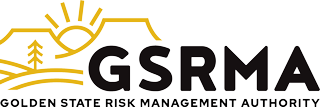Today’s public entity risk pools have many moving parts. A pool isn’t just about collecting contributions and administering claims. Pools have grown and matured over the years and thus offer many services to their members, including proactive loss prevention and risk control, legal consulting and review, training, financial assistance, and more. A pool’s role is essentially to partner with members to augment or be their risk management team with the ultimate goal of helping to make their district a better place to live, work, and do business in.
But times change, and demands grow, driven by various factors, including hard markets, disasters, and social/cultural trends. Change and growth magnify the need for pools to be agile and scalable, to have the ability to turn on a dime to meet new requirements from excess carriers and regulatory agencies, for the production of new types of loss and financial analysis, and for increased self-service capabilities for members.
As these demands grow, stress on the organization can grow as well. Time crunches, mistakes, missed deadlines, and data inconsistencies can all slowly increase, typically brought on by such things as over-reliance on tools such as Excel, lack of automation, ad hoc processes, and replication of data for personal use and across systems. These approaches can (and did) work when the pool was smaller and had fewer demands, but they will slowly begin to “break.”
Besides the obvious downsides of this, the organization’s focus can easily shift from the core mission to one of tactical, day-to-day firefighting. While it can and does feel good to be successful in these battles, service and positive impact for your members can slowly erode.
How does a pool avoid this or get back on track?
At GSRMA, growth and 3rd party reporting demands are constantly increasing. Total contributions have increased by more than 200% over the past ten years (> 100% in the past five years), and membership has increased by nearly 30%. With this expansion, we recognized the impact this was having on our organization and took steps to respond.
These efforts primarily focused on the following areas:
- Standardizing and streamlining processes (re-engineering as we went)
- Automating core pool processes such as:
- Prospect quoting
- Policy renewals, issuance, and invoicing
- Annual data collection
- Member renewal visits
- Collecting new types of data to be used for expanded loss and financial analysis
- Extending new information to Members
As part of a nearly three-year project, we also recently upgraded our disparate RMIS solutions to a single solution platform, thus removing much of the need for data replication, integration, and manual analysis processes.
These changes made sweeping impacts across our entire organization and continue to do so. GSRMA’s data and processes are on a firm foundation well suited for the increased demands to come.
Changes such as these are complex for an organization, and the costs are significant, but the alternative will likely be the wrong course in the long run. Great people and a vision for how things can and should be are keys to success. A willingness to change and the persistence and perseverance to lead through it will take your organization to a new day and future, ready for what is ahead.
If you are a member district of GSRMA, expect to see the benefits of our initiatives in 2024. We’ll reach out to ensure members take advantage of these improvements and invite you to contact us to learn more.

